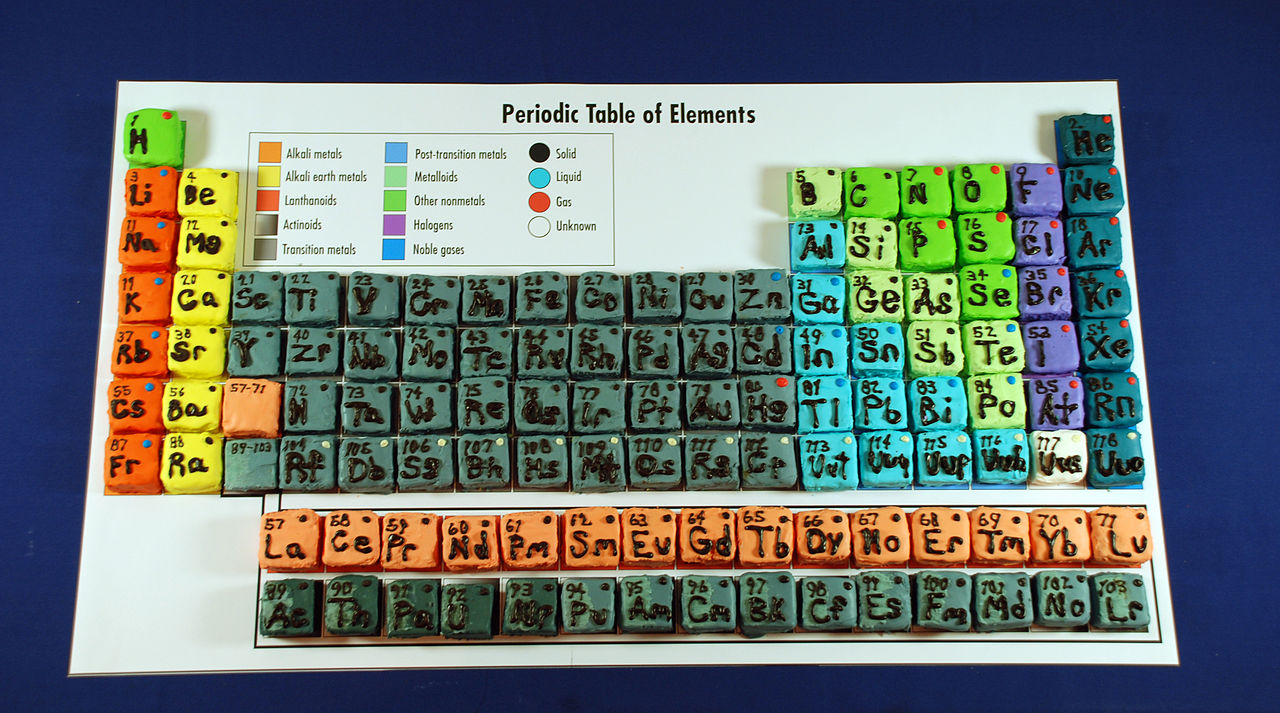‘Your single proton fundamental, essential. Water. Life. Star Fuel.’ This is the opening of the poetic table of elements published by Science Magazine.
The periodic table in cupcakes (Photo: Conrad Erb / Wikicommons).
The short poem above describes hydrogen in a haiku, a traditional form of Japanese poetry consisting of three lines with five, seven and five syllables.
The British writer and poet, Mary Soon Lee, wrote the 119 haikus covering the entire periodic table of elements as proposed by the Russian chemist, Dimitri Mendeleev, in 1869 and its subsequent revisions. With her background in arts, mathematics, and computer science, Mary Soon Lee has written dozens of science fiction and fantasy books.
Her elemental poetry merges the material qualities with historical backgrounds and applications. Take lithium for example: ‘Lighter than water, empower my phone, my car. Banish depression.’ Or nickel: ‘Forged in fusion’s fire, flung out of supernovae. Demoted to coins.’
The Science editors challenge readers to share their own elemental haikus on Twitter with the hashtag #ChemHaiku. Hundreds of entries have been published so far. My favourite is by Nicoletta Lanese (@NicolettaML):
How often do you
make chemistry jokes? Answer:
Periodically.
Do you have a question or comment about this article?
j.w.wassink@tudelft.nl


Comments are closed.